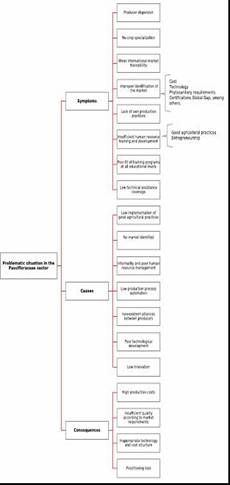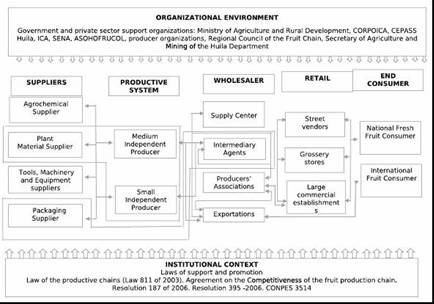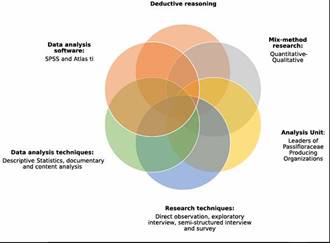1. Introduction
Management competencies are a key aspect for the achievement of the predetermined objectives of an organization or sector, of a polysemic nature, and boast varied models and categories for their analysis. Among the broadest conceptions is one that defines them as the underlying characteristics of individuals required for effectiveness on the job. This approach is used to analyze the management skills of the leaders of those organizations that conform the production chain for the passion fruit sector in the Huila department, in order to achieve the productive commitment established in the internal departmental agenda (Cámara de Comercio de Neiva, 2010; DNP, 2007).
For the identification of such competences, the questionnaire designed by Pérez López, andquoted by García-Lombardía, Cardona, and Chinchilla (2001) is used, by way of a mixed-type interpretivism methodology, with deductive reasoning. Two types of interviews were implemented jointly: exploratory and semi-structured.
In this sense, the research study was both conceived and implemented with the purpose of understanding, initially, the realities experienced in the Passifloraceae productive sector in the Huila department, from both an organizational and administrative perspective. In addition, there was interest in applying a social-scientific approach to the capacities and potentialities of the group of individuals that conform and make sense to the productive organizations of the sector, and finally, to identify the set of current and required competences that sustain and should strengthen organizational leaders, in order to make their activity more competitive, and design an improvement scheme that leads to the improvement of current competences, and consequently improve the living conditions of rural families in the department.
2. Theoretical framework
2.1. Production purposes
The national government of Colombia established a methodology, via the National Planning Department (DNP), for departments or regions to structure proposals for the Internal Agenda (DNP, 2007). Since 2005, the Huila department has considered the technology-based agro-industry, specifically specialty coffee, fruit, cocoa, and tobacco (Cámara de Comercio de Neiva, 2010; Gobernación del Huila, 2006), to be its main commitment, and has focused its efforts on fruit trees, and the most productive items of the Passifloraceae fruit family: granadilla, cholupa, maracuyá, badea, curuba and gulupa (Gobernación del Huila, 2015). The Huila department is among the main cultivators, nationally, with 31% of the total planted area, and production totaling 46,538 tons per year (Gobernación del Huila, 2017). The cholupa is its flagship product, with a denomination of origin that accredits its leadership (Table 1).
Table 1 Passifloraceae Production, 2018, Department of Huila
| Species | 2018 | |
|---|---|---|
| Area (Ha) | Production (Ton) | |
| Badea | 123 | 1.978 |
| Cholupa | 321 | 2.178 |
| Granadilla | 2.728 | 29.722 |
| Maracuyá | 2.447 | 33.500 |
| Gulupa | 1.332 | 23.710 |
| Curuba | 131 | 681 |
Source: obtained from Ministerio de Agricultura y Desarrollo Rural (2018).
The DNP (2007, p. 26) has established certain problems in the sector. In addition, Nelson Gutiérrez and his colleagues (Gutiérrez-Guzmán, Serra, and Dussan-Sarria, 2012), have analyzed the matter of good agricultural practices (Table 2). In several regional workshops, held between July and August of 2012, participatory production centers carried out an assessment of the sector in the Huila department (Gil, 2016; Parra, 2012 p. 84) (Figure 1).
Table 2 Critical and non-critical factors
| Critical technological Factors | Non-critical technological Factors |
|---|---|
| ●Existence of technologies to determine the fertility and irrigation of the producing soils, needs, critical periods and levels of extraction of nutrients. | ● Business management systems. |
| ● Validation of technology transfer systems in a comprehensive way. | ● Specialized technical assistance in the sub-sector. |
| ● Management of phytosanitary problems (fusarium, ovarian fly and virus). | ● Production systems certifications in BPA and Global Gap. |
| ● Existence of technologies for the pruning system. | |
| ● Technology transfer in the efficient use of agricultural inputs | |
| ● Existence of technologies for the generation of varieties | |
| ● Use of chemical pesticides for phytosanitary control in the productive process. | |
| ● Registration of efficiency of agricultural inputs for crop protection | |
| ● Adoption of technologies for the development of specialized nurseries and improvement of plant material. | |
| ● Application of computer and communication technologies. | |
| ● Application of technologies for agro-industry and marketing. |
Source: obtained from (Gil T., 2016).
Along with these situations and technical and investigative deficiencies, which affect the sector in the Huila department, business and organizational dimensions are recognized as crucial aspects that also limit its development. According to Parra (Parra, Aguilera, Escobar, Rubiano, and Rodríguez, 2011), there is a need for training in entrepreneurship for the human resources and agro-industry areas, and an adaptation of programs at all educational levels, in order to respond to regional social and economic realities, as well as the adoption of new technologies to optimize production in the fields.
2.2. Managerial competencies
Boyatzis (1982, p. 230) developed a generic model of competencies that explains the successful performance of managerial activity (Table 3). These are (Zayas Agüero, 2010) management and action by objectives, leadership, human resource management, subordinate management, focus on other people and specific knowledge. Spencer and Spencer (2008) define competencies as “an underlying characteristic of an individual that is causally related to a standard level of effectiveness and/or superior performance in a job or specific situation”. Similarly, they establish five types of characteristics of competencies (Table 4). In Table 4, it is presented a competencies classification developed by Hays Group in terms of the developmental status that can be evidenced in individuals (Table 4 and 5). Levy-Leboyer and Prieto (1997) point out that competencies are “repertoires of behaviors that some people master better than others, which make human beings effective in a given situation. This indicates that they are observable in work and life reality. As a result, competency concept implies putting into practice abilities, personality traits and knowledge in an integrated manner” (Table 6).
Table 3 Generic categories of managerial competencies
| Achievement and action competencies | Motivation for achievement |
| Concern for order and quality | |
| Initiative | |
| Search for information | |
| Service competencies | Interpersonal sensitivity |
| Customer service orientation | |
| Influence competences | Impact and influence |
| Organizational knowledge | |
| Building relationships | |
| Managerial competencies | man resource development |
| man resource management | |
| Teamwork and cooperation | |
| Leadership | |
| Cognitive competencies | Analytical thinking |
| Conceptual thinking | |
| Knowledge and experience | |
| Personal Efficiency Competencies | Self-control |
| Self-confidence | |
| Failure tolerance | |
| Commitment |
Source: (Boyatzis, 1982, p. 230).
Table 4 Managerial competencies
| Features | Description |
|---|---|
| Motivation | What a person thinks or wishes that leads to action. Motivations drive, direct and select behaviors through certain situations or goals. |
| Personality features | These are the physical characteristics and responses given to certain situations or information. |
| Self-understanding | They are the attitudes of people, their values or the image they have of themselves. |
| Knowledge | Information that a person knows about a specific content area. |
| Abilities | The ability to perform a mental or physical task. |
Source: adapted from Niño, Niño, Rodríguez, and Oviedo (2013).
Table 5 Characteristics of Hay Group’s structured competencies
| Ways in which the competency is presented | Analysis |
|---|---|
| Differentiating competencies | They are what distinguish a worker with superior performance from a worker with average performance. |
| Threshold or core competencies | These are the ones needed to achieve an average or minimally adequate performance. |
| Competencies possessed | They are related to perceptions, values and preferences, behaviors and reactions, the way of relating to others, and attitudes. |
| Competencies to improve | They are those that can be developed. They are technical and operational competencies. They include knowledge, skills and abilities applied to the job: use of tools, reading instruments, ability to interpret graphic information, among others. |
Source: Adapted from (Zayas Agüero, 2010).
Table 6 Key managerial competencies
| Competencies | Concept | Dimensions |
|---|---|---|
| Strategic managerial competencies | Competencies needed for good economic results. | Vision |
| Problem solving | ||
| Resource management | ||
| Customer focus | ||
| Effective relationships network | ||
| Internal managerial competencies | Competencies needed to develop employees and increase their commitment and confidence in the company. They are related to executive capacity and leadership skills. | Communication |
| Empathy | ||
| Delegation | ||
| Coaching | ||
| Teamwork | ||
| Personal Efficiency Competencies | These competencies measure the capacity for self-direction, which is essential to lead others by enhancing strategic and internal competencies. | Proactivity: initiative, creativity and optimism. |
| Self-management: discipline, tenacity and self-control. | ||
| Personnel management: time management, stress management, uncertainty management | ||
| Problem solving, intuition analysis, decision making. | ||
| Integrity, credibility, honesty and fairness | ||
| Personal development, self-criticism, self-knowledge, personal learning |
Source: Authors’ own elaboration based on Lombardia García Lombardía (2010).
2.3. Passifloraceae productive chain
The production chain concept refers to all phases, from the elaboration, distribution, and commercialization of a good or service, to its final consumption. It is possible to analyze a production chain based on the production factors involved, taking all economic agents, directly, in production, transformation, and delivery, to market the same product. Its main objective is to identify companies, institutions, operations, dimensions, and negotiation capabilities, technologies, production relations, and power relations in the price-determination process (Tomta and Chiatchoua, 2009) (Figure 2).
In order to ensure that the productive chain achieves the desired level of competitiveness (Areiza, 1999), an organizational and operational infrastructure must be formed, that links government institutions such as: the Secretariat of Agriculture, the Council for the Passifloraceae Production Chain, the National Learning Service (SENA), the Colombian Agricultural Research Corporation (CORPOICA), AGROSAVIA, and the Colombian Agricultural Institute (ICA) to the industrial sector. This would allow for the integration of agribusiness with producers, as well as academic and research institutions, using the cluster strategy (Ramírez and Otálvaro, 2015).
3. Methodology
Interpretivism was the research paradigm that guided the present study. This entails a rigorous analysis of the managerial competencies of the sector’s main players (Figure 3). The type of reasoning employed was deductive, (Dávila Newman, 2006; Marsh, Stoker, and Menezo, 1997), and the research approach was mixed (Hernández, Fernández, and Baptista, 2014, p. 21; Pérez, 2011). Two types of actors were identified in the analysis unit: the leaders of the passion fruit producing organizations and secondary players, representatives of the institutions in the Huila department that influence the passion fruit sector. Exploratory and semi-structured interviews were conducted. The population under study was composed of the leaders of sector organizations, producers, marketers, and representatives of public and private institutions that provide services and assistance to the sector in the Huila department. Descriptive statistical analysis was used to process the data, and inferences were made and conclusions were drawn therefrom, specifically from the identification of a general behavioral pattern. Documentary analysis enabled the organization, structuring, and interpretation of the information and its posterior summarization. For the analysis of the data collected through the instruments applied, the use of SPSS and Atlas Ti software was required. The adapted questionnaire was applied to 15 representatives of the passion fruit sector in the municipalities of Rivera, Santa María, Brussels, Pitalito, Algeciras, Garzón, Suaza, Palermo and Íquira. The data was triangulated with semi-structured interviews, with this group of individuals, as well as with members associated with these organizations. There were a total of 18 interviews, which were studied through those who present the ASOHOFRUCOL1 extension and technical assistance service.
4.Results
4.1. Identification of current Passifloraceae production sector organizational leader competencies in the Huila department
The identification of current organizational leader competencies occurred based on the application of the questionnaire designed by Pérez López (1998)), in which three categories of competencies necessary for organizational management are presented. These competencies include: strategic, intrinsic, and personal effectiveness. With the findings from the application of the questionnaire, which evaluated a compendium of 30 competencies grouped into three categories, the following competencies were identified for the group of organizations belonging to the passion fruit sector (Figure 4). Therein, by means of a radio-type graph, the average of self-evaluations carried out by these individuals is shown.
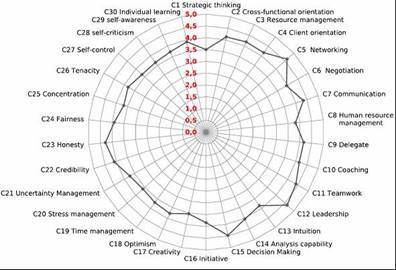
Figure 4 Managerial competencies of producer leaders of productive organizations in the Huila Department. Source: Authors’own elaboration.
In order to compare this self-evaluation with other results, the instrument was applied to representatives of the institutional body responsible for organizing, representing, defending and strengthening the interests of Colombia’s fruit and vegetable producers: ASOHOFRUCOL.
As a result of the competencies evaluation of the leaders of these organizations, a graph was constructed (Figure 5) with results that demonstrate the perception of institutional framework, with respect to their management competencies. The average rating indicates a change in said group’s trend in their self-evaluations: where four is the highest value, designated within the group of 30 management competencies, for competencies in negotiation, decision-making, initiative, stress management, credibility, and honesty. These are the skills, attitudes and capabilities that highlight managers in these productive associations. Results show that competencies which are least qualified are cross-functional orientation, relationships networking, communication, human resource management, delegation, coaching, intuition, analytical skills, creativity, optimism, time management, uncertainty management, concentration, self-criticism, and self-knowledge (Figures 6 and 7). The comparison of the data obtained was enabled by way of the semi-structured interviews carried out with organizational leaders and partners, together with the representatives of institutions involved in the sector. With the implementation of the content analysis method, a complementary view of the group of current management competencies, identified following application of the assessment instrument, was obtained.
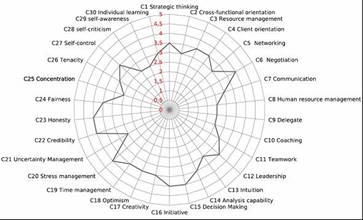
Figure 5 Managerial competencies assessment of producer leaders by ASOHOFRUCOL Source: Authors’own elaboration.
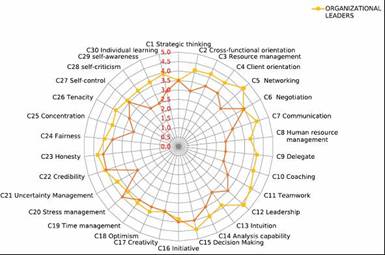
Figure 6 Perspective comparison-managerial competencies of leaders of passifloraceae production associations in the Huila department. Source: Authors’own elaboration.
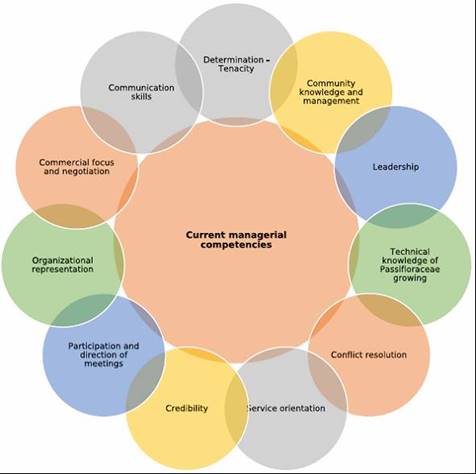
Figure 7 Current complementary competences: leaders of production organizations in the sector. Source: Authors’own elaboration.
With the data obtained from the semi-structured interviews, eleven managerial competencies were identified, which complement the current set of competencies. The current state of managerial competencies in the leaders of productive organizations, in the passion fruit sector in the Huila department, was then configured, in accordance with the questionnaire applied. The eleven, previously-identified competencies correspond to skills, knowledge, and attitudes that specifically denote the managers of productive organizations in the passion fruit sector. It is important to note that this group of individuals, at the management level, has advanced knowledge, as compared to their peers, regarding techniques and tools for the cultivation of passionfruit that they transfer to the community in which they are located.
4.2. Identification of managerial competencies required by organizational leaders in the productive passionfruit sector in the Huila department
Based on the content analysis carried out by Pérez López (1998), a set of management competencies was defined, in accordance with the characteristics of the population that conforms producer organizations and the needs or requirements to be competitive in the passion fruit sector (Table 7). The study gives a list of required competencies and it identifies a group of eleven competencies that the managers of these organizations currently possess.
Table 7 Managerial Competencies Required by the leaders - managers - of the producing organizations of the sector in the Huila Department
| Competencies | Concept |
|---|---|
| Determination - Tenacity | Ability to maintain a sustained effort without giving up on something you want to do or achieve. |
| Leadership | Ability to guide and influence other human beings, so that they change their behavior and skills in order to achieve a result. |
| Community knowledge and management | Extensive and deep knowledge of the community, and of the people that integrate it according to economic, social and productive aspects. |
| Technical knowledge of passion fruit cultivation | Ancestral and modern knowledge and know-how regarding the cultivation of passion fruits. |
| Conflict Resolution and Management | Apprehension of own techniques to avoid and solve own conflicts and in their interrelationship with other people. |
| Service attitude | Willingness to assist and/or collaborate with people. |
| Credibility | Behavior oriented to generate trust between the community and the person. |
| Attendance and direction of meetings | Ability to structure and moderate a group meeting. |
| Representation of the organization | Attitude oriented to be a representative figure of the organization in different events or circumstances that require it. |
| Commercial and negotiation attitude | Knowledge, skills and attitudes required to establish negotiation processes and agreements. |
| Ability to relate | Ability to establish links and interpersonal relationships and express their ideas in public. |
| Improve communication skills | Speaking, listening, reading and writing skills enabling efficient and skillful participation in all spheres of communication. |
| Record and card control | Knowledge about the documents and technical data sheets necessary to diligence in the development of the crop. |
| Resource Management | Ability to search, deal with the identification of possible sources of resources for the organization and manage the economic and financial resources of the organization. |
| Laboriousness | Hard work capability. |
| Responsibility | Attitudes and understandings that make you aware of your commitments and responsibilities. |
| Equity | Willingness to act with justice and benefit all the associates. |
| Market and Marketing Knowledge | Research and knowledge about the national and international market, its nature, characteristics, segments and relevant stages for the commercialization of the product. |
| Knowledge of the sector (production chain, value chain, actors involved, cluster) | Knowledge of the links involved and their impact on the production and value chain of the passion fruit sector at a departmental, national and international level. |
| Organizational operation | Understanding what an organization is, its characteristics, structure and operation needs. |
| Teamwork | Skills and attitudes needed to work as a team, understand others and lead their collective work in search of a common purpose. |
| Collective Marketing | Capacity and attitudes to generate and establish sales relationships for collective products. |
| Establishing Ties of Trust and Partnership | Relationship building attitudes to create and strengthen bonds with other people. |
| Understanding the Contractual Processes | Knowledge of the nature of what a contract is, the types of contracts, their characteristics, clauses, responsibilities and rights. |
| Time Management | Capacity to define activities and to assign times in order to be efficient with its intangible resource. |
| Capacity to convince | Aptitude and attitude oriented to incite and move someone to do something with reason. |
| Business Vision | Recognition of what opportunities, needs and strengths you have to establish effective businesses. |
| People Management | Ability to reach out to people, build relationships with them and guide them towards achieving the organization’s goals. |
| Discipline | A person who is orderly with his or her habits and who tries to get involved and have a commitment to what he or she decides to do. |
| Commercial and Negotiation Strategies | Interest and attitude to participate in local and national commercial activities. |
| To promote practices and culture of association | Understanding the characteristics, needs and implications for fostering an associative culture. |
| Independence | Attitude to not depend on the opinions or influences of others. |
| Risk taking | Attitudes aimed at understanding risk, its implications and impact on the entrepreneurial process. |
| Entrepreneurial spirit | Learning the skills and attitudes needed to undertake and run a business. |
| Certification and Process Knowledge | Appropriation of the necessary aspects and the process referring to obtaining certifications (GAP, Exporting Estate, Global Gap). |
| Ability to plan and realize purposes | Knowledge and attitude to formulate plans and execute them properly |
| Knowledge about financial credits | Understanding of the concept of credit, characteristics, rates, interests and costs. |
| Quality Management | Learning about managing traceability processes in crops in each of their stages, as well as in the production and value chain itself. |
| Collective Vision | Ability to think about one’s own and one’s colleagues’ orientation and work in order to achieve common goals and purposes. |
| Emotional Intelligence | Ability to manage, understand or handle one’s emotions |
| Use of the tics-systems-APPs | Ownership and management of computers (software), digital platforms through the Internet and smart phones. |
| Patience | Attitude that allows to be able to support setbacks and difficulties to obtain something. |
| Administrative and logistic organization | Capacity and knowledge about administrative and logistics practices in an organization and sector. |
| Knowledge of Trade Agreements and Export Processes | Understanding of the conditions and nature of a comprehensive tax, tariff and trade treaty that often includes investment guarantees and the processes and regulations necessary to carry out export processes. |
| Punctuality | Ability, care and diligence in doing things in a timely manner. |
| Motivate and Empower the Team | Ability to influence the mood of the people who make up the organization. |
| Security | Ability to provide peace of mind and firmness on an issue. |
| Structure/Promote an organizational culture | Capacity to foster the development of knowledge, rites and symbols that promote associativity in the organization. |
| Knowledge about logistics processes | Learning the activities and successive phases of operation. |
| Basic education (primary, secondary and technological) | Learning the basics of educational training: reading, writing, adding, subtracting, multiplying and dividing |
| Accounting knowledge and management | Approach and knowledge of records and basic accounting requirements. |
| Structuring and establishing common agreements | Ability to identify, negotiate, structure and guide the development of a deal between a group of people. |
| Assignment of Roles and Division of Functions | Understanding of what a job is, its functions, authority, responsibilities and benefits within an organization |
| New Forms of Environmentally Sustainable Crops (biological-organic) | Knowledge oriented to the generation of organic and environmentally responsible crops. |
| Solidarity Economy and Organization | Knowledge oriented to understand the nature, characteristics and functioning of the economy and solidarity organizations in the world and Colombia. |
| Knowledge of Industrial Transformation Processes | Recognition of the necessary activities and the diversity of existing possibilities to transform the fruit into by-products. |
| Family Farming | Importance of promoting agriculture from the family nucleus and transmitting their knowledge to their children and relatives. |
| Planning -Organizing- Execution- Control | Understanding of the administrative cycle and its interdependence for the functioning of organizations. |
| Fostering Generational Relief | To promote the transmission of knowledge and empirical knowledge about the countryside to their children so that they see it as a dignified and profitable way of life. |
| Territorial roots | To promote the identity and sense of belonging to the territory where they live. |
| Families, Values and Trust | To promote the importance and sense of family, the values that nourish it and the need to generate bonds of trust between themselves and the community. |
| Production Costs | Having the ability to establish production costs, break-even point and production and revenue needs to make your business profitable. |
| Project Formulation | Basic knowledge of the composition, structure and elaboration of productive projects |
| Sustainable Agricultural Activity | Knowledge and understanding oriented to recognize in their agricultural activity as a work that should provide income to assume a dignified life. |
| Change of Mentality (from informal to formal) | Recognize the advantages, commitments and the need to bring your activity and business to formality. |
| Initiative | Attitude-Quality regarding starting with an activity, process finding an opportunity. |
| Autonomy | Capacity to act according to your criteria and decision. |
| Business skills planning | Attitudes and skills regarding business planning. |
| Business skills | Attitudes and skills related to selling a product. |
| Operation and Implementation of rotary Funds | Knowledge of what a rotary fund is, structure, composition, needs, regulations and implementation. |
| Financial and tax knowledge | Basic knowledge of tax elements that have to do with the type of organization they are part of and their reality as a family-company. |
| Implication of the use of agrochemicals - phytosanitary risks | Understanding of the natural and farmer impact and implications of the use of agrochemicals. |
Source: Authors’ own elaboration.
In order to draw up a plan to improve competencies in this group of managers, absences were delimited with those necessary competencies in order to make said individuals’ organizations more competitive.
To this end, a documentary review was carried out on various institutional, commercial, and regulatory documents at the regional, national, and international levels (doctoral theses, previous research in the sector, management and performance reports on the national passionfruit production chain, departmental production goals, scientific articles on the sector, commercial and technical news, and competitiveness agreements for the passionfruit chain in Colombia) that demonstrated trends, with respect to the minimum knowledge and skills required to achieve adequate performance in this productive and commercial activity. The above, along with the statistical and content analysis performed, as well as the interviews and questionnaires applied, allowed for the identification of required management skills.
Thus, their names and conceptual definitions were adjusted, by grouping them into categories such as: self-competencies, management competencies, technical cultivation competencies, administrative competencies, commercial competencies, communication competencies, cultural competencies, entrepreneurial competencies, technological competencies, educational competencies, financial competencies, accounting competencies, and project competencies (Table 8).
Table 8 Managerial competencies improvement scheme
| Competency type | Components | Description |
|---|---|---|
| Human being competencies | - Determination | Competencies related to the attitudes, skills, values and principles that govern the thinking and acting of human beings, so that they guide their behavior. This group of competencies are appropriated during the relationships with oneself, the family and the society in which the individual is enrolled. However, throughout life, individuals can be ratified and/or reconsidered in their reflexive, social and work interaction. |
| - Tenacity | ||
| -Leadership | ||
| -Service attitude | ||
| -Credibility | ||
| -Capacity to relate | ||
| -Laboriousness | ||
| -Responsibility | ||
| -Equity | ||
| -Capacity to convince | ||
| -Discipline | ||
| -Independence | ||
| -Assuming risks | ||
| -Emotional intelligence | ||
| -Patience | ||
| -Punctuality | ||
| -Security | ||
| -Autonomy | ||
| Management | -Community knowledge and management | Management is a normative and even a praxeological discipline, consisting of both a nucleus, the management sciences, and a periphery, the different management techniques. It is more a science of design than a science of analysis, insofar as it is defined more by its project of knowledge than by its object of knowledge (Bialès, 2013). |
| -Conflict resolution and management | ||
| -Representation of the organization | ||
| -Resource management | ||
| -Knowledge of the sector (production chain, value chain, actors involved, cluster) | ||
| -Teamwork | ||
| -Establish trust-association ties | ||
| -Time management | ||
| -Business vision | ||
| -People management | ||
| -Capability to plan and to materialize the purposes | ||
| -Quality management | ||
| -Motivate and empower the team | ||
| -Structuring and establishment of common agreements | ||
| -Fostering generational change | ||
| Attendance and direction of meetings. | ||
| Growing and crop techniques | -Technical knowledge about passion fruit growing. | Ancestral knowledge and appropriate technical knowledge by the individual throughout his agricultural activity through family transfer as well as through training. |
| -New forms of sustainable growing (biological-organic). | ||
| Administrative skills | -Register and card control. | It is their ability to efficiently transfer and exchange information that leads to an understanding among the members of an organization for effective decision making. The competencies are: communication, planning and administration, teamwork, strategic action, globalization and personnel management (Castrillón, Cabeza, & Lombana, 2015). |
| -Operation of the organization. | ||
| -Understanding of the contractual processes. | ||
| -Administrative and logistic organization. | ||
| -Knowledge about logistic processes. | ||
| -Assignment of roles and division of functions | ||
| -Planning -organization- execution- control. | ||
| Commercial Competencies | -Commercial and negotiation behaviors. | These competencies are the skills, attitudes and knowledge used by individuals in order to establish buying and selling relationships with customers and suppliers in a way that benefits the participants in that relationship. |
| -Market knowledge and marketing | ||
| -Collective marketing | ||
| -Commercial and negotiation strategies | ||
| -Certification and process knowledge | ||
| -Knowledge of trade agreements and export processes | ||
| -Structure/promote an organizational culture | ||
| -Territorial roots | ||
| -Families, values and trust | ||
| -Change mentality from informal to formal | ||
| -Commercial skills | ||
| Communication skills | Improve communication skills | A set of skills and knowledge that enable speakers of a language community to understand each other. (Hymes, 1972). |
| Culture | -Fostering practices and culture of association | A network of shared meanings that get their connotation from the context, but that inhabit the mind, giving them a specific cultural identity. (Millán & Sociologist, 2000). |
| -Collective vision | ||
| -Family farming | ||
| -Agricultural activity must be economically sustainable | ||
| Entrepreneurship | -Entrepreneurial spirit | Set of attitudes and skills that allow for visualization, establishing a set of purposes so that they can be achieved. |
| -Initiative | ||
| -Business skills | ||
| Technology | Use of ICT | To have skills to search, obtain, process and communicate information, and to transform it into knowledge. |
| Educational | -Basic education (primary, secondary and technological) | Capacity expressed through knowledge, skills and attitudes, which is required to execute a task in an intelligent way, in a real environment or in another context (Aguerrondo, 2009). |
| -Solidarity economy and organization | ||
| -Knowledge of industrial transformation processes | ||
| -Implication of the use of agrochemicals | ||
| -Phytosanitary risks | ||
| Financial | -Financial credit knowledge | Field of study on how people allocate scarce resources over time (Bodie & Merton, 2003). |
| -Operation and implementation of retary funds | ||
| -Financial and tax knowledge | ||
| Accountants | -Knowledge and handling of accounting | Description and prediction of the state and economic evolution of a specific entity, made through technical methods of collection, assessment, representation and interpretation, in order to communicate to top management objective, relevant and valid information for decision making. (Meigs, Johnson, Vélez, & Meigs, 1981). |
| -Production costs |
Source: Authors’ own elaboration.
5. Discussion
In order to strengthen the managerial competencies of leaders in the passion fruit sector in the Huila department, and to make the productive purposes of this department a reality, it is essential to provide and promote high-quality primary, secondary, and technological education standards among the rural population. This is necessary, as education provides the essential tools for the achievement, appropriation, and strengthening of competencies. It also integrally trains this group of individuals, as defined by the diverse authors analyzed (Levy-Leboyer and Prieto, 1997; Lussier, 2006; Zayas Agüero, 2010).
The difference between the required competencies and those which are currently employed marks a path which will close the gap and ensure that sector leaders achieve the required competencies and contribute to the development of the aforementioned production chain (Figure 8).
Management competencies, such as cross-functional orientation, resource management, client orientation, relationship networking, negotiation, communication, human resource management, delegation, coaching, decision making, and teamwork are those in which leaders feel most confident (Pérez Lopez, 1998). However, the competencies that require further effort include: strategic thinking, negotiation, people management, intuition, analytical skills, initiative, creativity, uncertainty management, stress management, and concentration skills.
6. Conclusions
The Huila department, as a leader in the production of passion fruits in Colombia, requires additional phytosanitary, plant material, organizational, competitive, and socio-economic scientific research for the sector analyzed in the present study. Additionally, the results of this investigation show the need to implement social projects that allow for the generation of appropriation strategies for the competences present in the population group analyzed herein. This will allow for the establishment of important results, within the framework of university social responsibility.
The appropriation of knowledge is essential, in order to enable farmers to understand how the passion fruit business works, how production and value chains are structured, and the identities of important players. Thus, farmers will achieve a holistic view of the business, be able to design commercial and business strategies, and understand the agro-industrial processes to which these fruits are subjected for byproduct generation. This will allow them to generate enterprises that will improve their family’s quality of life.
There is a need to train the those who form part of producer associations and define generational change in the sector, so as to enable this work to collectively benefit its members, promote associations, and change perspectives regarding the management of businesses to include autonomy and independence.
The leaders of these organizations are characterized by strong technical skills, from which basis they compare their work and leadership with peers and other players in the passion fruit value chain. However, these individuals’ major competency weaknesses lie in the areas of organizational entrepreneurship, administration, and management. Although their self-evaluations were quite optimistic, they are put into question by the evaluation applied to both institutional leaders and their colleagues.
This study not only describes, explores, and explains managerial competencies of organizational leaders in the passion fruit sector in the Huila department, but also proposes an intervention strategy to appropriate, strengthen, and promote the competitiveness of these players in the passion fruit value chain in both Huila and Colombia.














